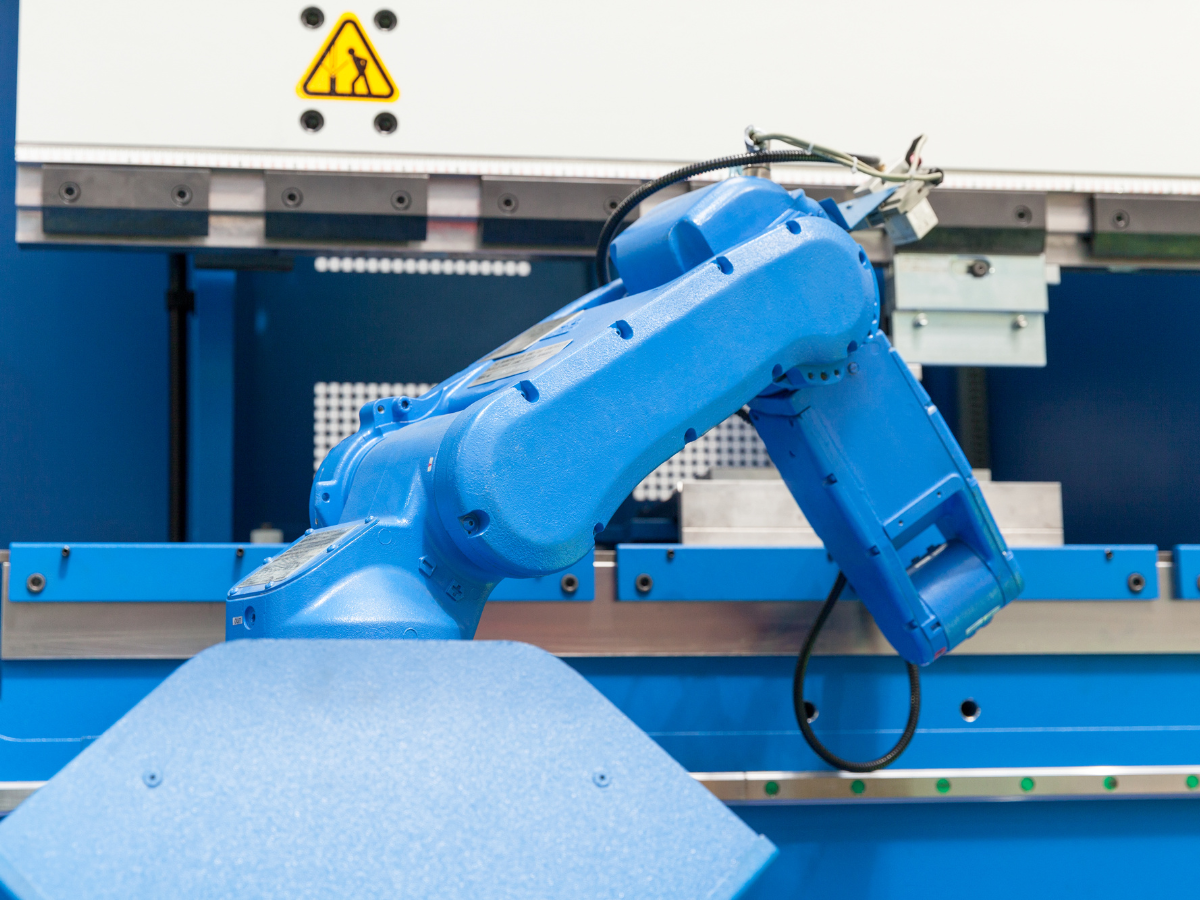4 Ways Robotic Machine Tending Benefits the Bottom Line
Although robots have been helping manufacturers improve their operations for some time, robotic machine tending hasn’t been as widely adopted as it is perceived as a very complex process. However, advances in automation technology coupled with a shortage of skilled workers and an economy that demands higher production levels despite tighter budgets have manufacturers reconsidering robotic machine tending – and finding that there are several major advantages.
This blog will define robotic machine tending, explore applications and outline four significant financial benefits of employing the technology in a manufacturing facility.

What is Robotic Machine Tending?
Currently, most machine tending operations are handled by human workers who load and unload machines and then restart the process once the finished part or product is moved out of the way. The job is tedious, repetitive and can be hazardous. Enter robotic machine tending, which is an advanced form of automation designed to more efficiently load and unload parts and/or perform several functions in a single application. It should be noted that robotic machine tending differs from robotic material handling in that a robotic machine tending system communicates with the process machinery and performs several functions via one application.
As a matter of fact, modern, automated machine tending robots are able to easily move from one step to the next, unlike traditional robots that follow one unchanging set of directions to complete one task.
Today’s automated machine tending equipment includes adaptable programming, superior precision and greater flexibility, which allows it to seamlessly handle complex machine tending operations with high levels of efficiency and accuracy. And, as qualified, skilled workers are becoming harder to find and retain, robotic machine tending is poised to gain traction in the manufacturing industry.
Where is Robotic Machine Tending Used?
The most common application for robotic machine tending is in machine shops where robots are used to move raw material from its supply position, transport it to the machine, orient it, remove the finished part from the machine and then repeat the cycle until it runs out of material or is programmed to stop.
They are most often used on computer numerical control (CNC) machines, mills and presses. Robotic machine tending technology is used in applications such as:
- Loading and unloading parts for grinding
- Loading products into CNC milling and turning machines
- Tending injection molding product loading and unloading applications
- Loading and unloading stamping, punching, trimming and forging equipment
- Tending compression molding applications
4 Benefits of Robotic Machine Tending
Manufacturers that are currently using a manual process to accomplish these tasks are missing out on the opportunity to boost throughput, increase quality, enhance safety and reduce operational costs in the facility. Here are the top four ways robotic machine tending significantly benefits the bottom line:
1. Increased Efficiency and Throughput
Robotic machine tenders are not only faster and more efficient than human workers performing the same tasks, but they do not require breaks, sick days or shift changes and they do not become bored or tired when performing the tedious and repetitive tasks associated with machine tending. Quite simply, using robotic machine tending alleviates the human limitations that can have a negative impact on efficiency and productivity. Robotic machine tending will also eliminate production bottlenecks and other lags, which increases process efficiency and results in increased throughput and capacity.
2. Increased Quality
Automated machine tending robots are programmed to perform the tasks the same way each time and do so with accuracy and repeatability, which means that machine tending operations will occur without deviation. Using robotic machine tending reduces the chance of introducing human errors into the process, thus the precision and consistency of a robot will enhance finished product quality. In addition, these features reduce accidents related to human error, such as dropped or broken materials or products, which minimizes stoppages and waste on the line and also contributes to product quality – and the bottom line.
3. Enhanced Safety
Manufacturing facilities can be hazardous places and humans can easily be injured when working on fast-moving machinery such as milling, grinding, pressing and turning equipment. Using robotic machine tending reduces the risk of workplace injuries by removing human workers from posts on potentially dangerous equipment. In addition, machine tending often involves the motion of lifting and bending to load and unload machines. Humans are prone to serious injury when performing repetitive motions, so employing robotic machine tending will help eliminate many of these injuries and their associated costs.
4. Reduced Operational Costs
Sourcing, training and retaining skilled workers for manual labor and machine tending positions can be challenging and costly. There are also medical benefits and paid sick and vacation days for human workers. However, automated solutions minimize these labor costs, while allowing human employees to focus on more complex tasks that bring more value to the business. Additional cost savings come from the reduction in scrap and waste that is achieved through the consistency and precision of robotic machine tending, as well as the decrease in worker compensation and other costs associated with an improved safety record.
While many manufacturers have been slow to adopt robotic machine tending, it is obvious that the technology has the capacity to greatly contribute to the overall profitability of an operation and should not be dismissed. To learn more about robotic machine tending and how it can make your operation more competitive, please contact JHFOSTER.